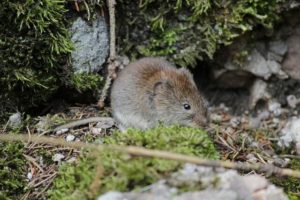Recognizing Vole Backyard Damage and How to Fight It
Recognizing Vole Backyard Damage and How to Fight It
Blog Article
Comprehensive Guide to Efficient Vole Insect Control: Infestation Identification and Therapy Techniques
In the realm of reliable pest control, vole invasions position a special difficulty that demands a critical strategy. By exploring the subtleties of vole habits, comprehending vital indicators of problem, and evaluating an array of control choices, one can establish an extensive technique to combat these evasive bugs.
Comprehending Vole Habits
Vole actions is identified by their tunneling habits and quick recreation prices, making them a difficult parasite to manage effectively. These tiny rats typically create detailed passage systems underground, utilizing them for sanctuary, food storage, and transport. Voles are herbivores, consuming a variety of plants, light bulbs, lawns, and roots, which can trigger considerable damage to yards, orchards, and yards. Their quick reproductive rate further makes complex control initiatives, with ladies with the ability of producing numerous litters in a solitary year, each having numerous offspring.
Voles are most active throughout the early morning and night hours, investing most of their time foraging for food. Their burrowing practices not only interrupt yards and lawns yet also make them testing to eliminate and find. Recognizing vole habits is vital for effective parasite control techniques. By identifying their burrow places, monitoring feeding locations, and executing targeted control methods, such as capturing or environment modification, vole infestations can be managed effectively.
Indications of Vole Problem

Avoidance Methods
Carrying out reliable avoidance approaches is crucial in reducing vole invasions and securing vegetation from their harmful feeding practices (vole yard damage). To avoid vole invasions, it is necessary to begin by eliminating prospective food resources and sanctuary. Maintain yard and plants trimmed short, eliminate weeds and particles, and maintain a tidy yard or yard to make the area much less appealing to voles. Setting up obstacles such as equipment fabric or below ground fencing can additionally aid discourage voles from getting in certain locations. In addition, decreasing excess wetness by repairing leaking pipes and guaranteeing correct drain can make the environment much less friendly for voles.
Consistently evaluating the property for indications of vole activity, such as paths and tunnel openings, is vital for very early detection and timely action. If vole activity is thought, think about using repellents or catches purposefully positioned near their paths.
Non-Lethal Control Approaches
To successfully handle vole populaces while prioritizing gentle techniques, non-lethal control strategies provide sensible solutions for lowering vole damage in landscapes and gardens. These barriers can be buried at the very least 12 inches curved and deep at a 90-degree angle to stop voles from tunneling below.

Lethal Control Options
One efficient technique for resolving vole invasions in landscapes and yards entails the critical use dangerous control alternatives. When faced with a serious vole problem that non-lethal methods have stopped working to have, executing deadly control actions ends up being important. One generally utilized vole pest control dangerous control choice is making use of snap catches. These catches are developed to promptly and humanely eliminate voles upon activation, making them a preferred selection for numerous garden enthusiasts and landscaping companies. To enhance the efficiency of breeze catches, it is recommended to position them in areas where vole task is high, such as along paths or near burrow entrances. An additional dangerous control option is the usage of harmful lures specifically developed to target voles. These baits have poison that is consumed by the voles, leading to their ultimate demise. Care should be exercised when making use of toxic lures to stop injury to non-target animals or pet dogs. Generally, when using deadly control choices, it is important to do so responsibly and in accordance with local laws to successfully take care of vole invasions.
Verdict
Finally, effective vole parasite control needs a comprehensive understanding of vole habits, identification of signs of invasion, execution of avoidance techniques, and application of both non-lethal and lethal control approaches. By combining these techniques, people can properly handle vole populaces and protect their building from damage. It is necessary to deal with vole invasions immediately to avoid further problems and reduce the effect on the surrounding atmosphere.
Provided the elaborate passage systems and quick reproduction prices particular of voles, recognizing the indications of vole problem ends up being crucial in efficient bug control. One of the primary indicators of vole visibility is the existence of surface runways or routes in yard or snow, normally concerning 1-2 inches vast, created as voles take a trip between their burrows and food sources.To successfully handle vole populations while focusing on gentle techniques, non-lethal control methods offer practical options for minimizing vole damages in landscapes and yards.One efficient method for dealing with vole infestations in landscapes and gardens involves the critical usage of dangerous control options. vole pest control.In final thought, effective vole bug control calls for a detailed understanding of vole habits, identification of indications of problem, implementation of avoidance approaches, and application of both non-lethal and lethal control methods
Report this page